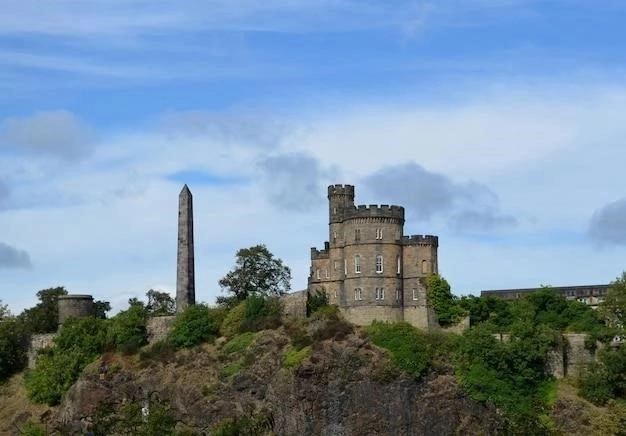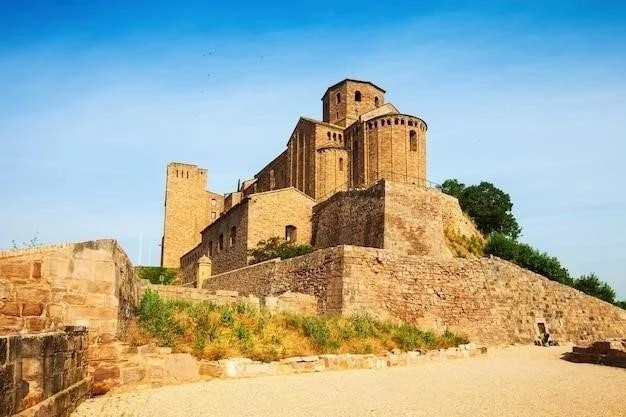Standing resolute against the ceaseless tides of the Arabian Sea‚ Kolaba Fort is a testament to Maharashtras rich history and architectural prowess. Located just off the coast of Alibag‚ this island fortress beckons travelers to uncover its secrets and relive the valor of a bygone era.

A Legacy Forged in Stone and Sea
Kolaba Fort‚ also known as Kulaba Fort‚ traces its origins back to the 17th century. Its construction was initiated under the visionary leadership of the Maratha warrior king‚ Chhatrapati Shivaji Maharaj. Recognizing the strategic importance of the Konkan coastline‚ he envisioned a formidable maritime base to thwart invaders and safeguard his realm.
Work on the fort commenced in earnest in 1680. Shivaji Maharajs strategic acumen is evident in the forts location‚ strategically positioned on a rocky islet‚ separated from the mainland by a narrow stretch of water. This natural barrier provided an added layer of defense‚ making it a formidable challenge for enemy ships to breach.
A Bastion Against Invaders
Throughout its history‚ Kolaba Fort has witnessed the ebb and flow of power struggles and maritime conflicts. Under Shivaji Maharajs reign‚ it served as a crucial naval base for the Maratha fleet‚ bolstering their dominance in the Arabian Sea. Later‚ the fort fell under the control of the Siddis‚ a powerful maritime force‚ before being reclaimed by the Marathas under the leadership of Kanhoji Angre‚ revered as the “Shivaji of the Indian Sea.”
However‚ the forts strategic significance also made it a coveted prize for European colonial powers. In the 18th century‚ it was captured by the British East India Company‚ marking a turning point in the regions history. Despite changing hands‚ Kolaba Fort remained a symbol of resilience and resistance against foreign domination.

Architectural Splendor: A Fusion of Strength and Grace
Kolaba Fort is a remarkable example of military architecture‚ seamlessly blending defensive fortifications with aesthetic elements. Constructed primarily from black rock‚ the forts imposing walls rise from the sea‚ creating an aura of impregnability.
Key Architectural Features:
- Fortified Walls and Bastions: The forts perimeter is defined by sturdy walls‚ punctuated by strategically placed bastions that provided vantage points for cannons and defensive maneuvers.
- Gates and Entrances: Access to the fort was through two main gates: one facing the Arabian Sea and the other facing Alibag town. These gates were heavily fortified‚ often featuring intricate carvings and decorative elements.
- Freshwater Tank: A testament to the forts self-sufficiency‚ a large freshwater tank within its walls collected rainwater‚ ensuring a sustainable water supply for its inhabitants.
- Temples and Shrines: Reflecting the religious syncretism of the region‚ Kolaba Fort housed temples dedicated to various deities‚ including Ganesha‚ Mahishasura‚ and Siddhivinayak.
Unveiling the Forts Hidden Treasures:
A visit to Kolaba Fort is a journey through time‚ offering glimpses into the lives of those who lived and fought within its walls. As you explore its ramparts and passageways‚ youll encounter remnants of a bygone era‚ including old cannons‚ crumbling structures‚ and weathered inscriptions.
Highlights of the Fort:
- The Citadel: Located at the highest point of the fort‚ the citadel offered panoramic views of the surrounding sea and coastline‚ serving as a command center during times of conflict.
- The Hammam: Remnants of a hammam‚ or traditional bathhouse‚ provide a glimpse into the daily lives of the forts inhabitants.
- The Dargah of Haji Kamaluddin Shah: A revered Sufi shrine located just outside the forts main entrance‚ attracting devotees from far and wide.
A Timeless Icon: Preserving a Legacy
Today‚ Kolaba Fort stands as a protected monument‚ its preservation overseen by the Archaeological Survey of India. Efforts are underway to conserve its structural integrity and prevent further deterioration. The fort has also become a popular destination for tourists and history enthusiasts‚ drawn to its historical significance‚ architectural grandeur‚ and scenic beauty.

Experiencing Kolaba Fort:
The best time to visit Kolaba Fort is during low tide when visitors can walk across the shallow waters to reach the island. During high tide‚ boats are available for transport. As you plan your visit‚ be sure to check the tide timings to make the most of your experience.
Tips for Visitors:
- Wear comfortable shoes suitable for walking on uneven surfaces.
- Carry sufficient water and snacks‚ as there are limited options available at the fort.
- Be respectful of the forts historical and religious significance.
- Consider hiring a local guide to enhance your understanding of the forts history and architecture.
Kolaba Fort stands as a testament to the enduring spirit of Maharashtra‚ a region where history and legend intertwine. Its captivating past‚ architectural brilliance‚ and breathtaking coastal vistas continue to inspire awe and wonder‚ making it an unforgettable destination for travelers from all walks of life.
A Serene Escape from the Urban Hustle
Beyond its historical significance‚ Kolaba Fort offers a serene escape from the bustling energy of nearby Mumbai. The short ferry ride from Alibags shores transports visitors to a world where the only sounds are the gentle lapping of waves against the forts walls and the cries of seagulls overhead. This tranquil atmosphere provides a unique opportunity for reflection and contemplation‚ allowing one to fully appreciate the forts timeless beauty and the passage of history.
A Cultural Tapestry: Festivals and Legends
Kolaba Fort is not merely a relic of the past but a living testament to the enduring cultural traditions of the region. Each year‚ the fort comes alive during the festival of Shiv Jayanti‚ which commemorates the birth anniversary of Chhatrapati Shivaji Maharaj. The air reverberates with devotional songs‚ and the fort is adorned with colorful flags and lights‚ creating a festive ambiance that draws locals and tourists alike.
Adding to the forts allure are the legends and folklore associated with it. One such tale recounts the story of a loyal commander who‚ bound by duty‚ chose to remain at his post even as the tide rose‚ ultimately sacrificing his life for the forts protection. Such stories‚ passed down through generations‚ imbue Kolaba Fort with an aura of mystery and intrigue‚ captivating the imaginations of all who visit.

A Call to Conservation and Responsible Tourism
As custodians of this historical treasure‚ it is our collective responsibility to ensure the preservation of Kolaba Fort for generations to come. Sustainable tourism practices‚ such as responsible waste disposal and respectful behavior within the forts premises‚ are crucial to minimize human impact on this fragile environment.
Furthermore‚ ongoing conservation efforts are essential to address the challenges posed by natural elements and the passage of time. The Archaeological Survey of India‚ along with local authorities‚ plays a vital role in maintaining the structural integrity of the fort‚ ensuring that its historical and architectural legacy endures.
Kolaba Fort: A Timeless Legacy
Kolaba Fort stands as a timeless icon on the Konkan coast‚ embodying the valor‚ ingenuity‚ and cultural richness of Maharashtras heritage. Whether you are a history enthusiast‚ an architecture aficionado‚ or simply seeking solace amidst the serene embrace of the sea‚ Kolaba Fort promises an unforgettable experience. As you stand upon its ancient ramparts‚ gazing out at the vast expanse of the Arabian Sea‚ youll be transported back in time‚ connecting with the spirit of a bygone era and forging memories that will last a lifetime.










